.jpg)
Very popular with Italian holidaymakers, the vacation delights of Italy's sun-bathed deep south are only now being discovered by the rest of us. Calabria is the heart of the Mezzogiorno (the Italian for 'midday' the phrase refers to the baking sunshine in which the region basks), and you'll know it as the toe of Italy. This is the region that 'kicks' Sicily in the Mediterranean Sea.
Calabria offers superb value for your euros, a little holiday money in Calabria can go a long way. And with coastline on three sides, curving round to meet the Ionian Sea on the south-eastern coast of Italy, Calabria has kilometres of sandy beaches, rocky coves, spectacular headlands ... and space.
For the information in this article see www.knowital.com/calabria/
Calabria is also a region of remarkable beauty, with a long history dating back to its role at the heart of Magna Graecia (Greater Greece) in Classical antiquity; indeed far earlier than that. Explore its valleys on your Calabria vacation and you discover a culture apparently untouched by recent centuries.
The coastal areas swiftly climb to rugged and rocky mountains. Here you stumble upon hamlets whose origins are lost in antiquity, some inhabited many abandoned, as well as old farmsteads. Remarkably too, there is a burgeoning skiing industry in Calabria. You probably won't be surprised to learn that the population of Calabria has been steadily falling for generations, as the people flee the harsh, rural life. Over 1m Calabrians have upped sticks for a new life in Australia, Brazil and United States in the last century or two.
And when you do discover a populated village it's like stepping back ... 50 years, 100 years, or much further. There are hamlets in the Calabrian hills seemingly exclusively populated by old women in traditional black dresses, old men sat for hours outside the bar and children playing in the street. The missing generation of mothers and fathers is in Milan, Florence, Bologna or Rome, an immigrant workforce within Italy, working to send money back home and built their own houses. It brings forcibly home the economic division that exists within Italy, between rich north and poor south. It may be 70 years since Carlo Levi's seminal memoir Christ Stopped at Eboli exposed the poverty of Italy's south, but things haven't changed entirely.
Calabria's main city is Cosenza, which provides a good base for exploring La Sila, one of the last great stretches of European forest still intact. Hard to imagine, but Calabria's scorched and arid expanses were once clothed entirely in forest. The Romans changed that when they came and cleared the land, in many cases making a wasteland of fertile uplands. Holiday in Calabria and you're following in the footsteps of thousands of years of invasion and settlement.
But the Romans are fairly recent visitors ... this is a region with very ancient roots. The oldest inhabitants we can trace are the Bruttians, an Italic tribe (one of the many scattered by the Romans). The Bruttians lived in Calabria around 1000BC. Times were best for the old Calabrians under the Greeks, who laid out an efficient system of agriculture. Greek invaders arrived around 800BC, and mathematician Pythagoras was a native of the town of Crotone.
Things got unpleasant for Calabria under the Romans but much worse was to come. The Visigoths arrived in the fifth century, following the sacking of Rome. Legend has it that Visigoth King Alaric is buried with his treasure in the river Busento near Cosenza.
A wearying wave of invasions then ensued. The Goths, Byzantines, Lombards, Saracens and Normans colonised or simply pillaged Calabria, which became part of the Kingdom of Sicily in the early Middle Ages. Refugees from Albania arrived around the year 1400, bringing their language. During your vacation in Calabria you must visit the Pollino National Park. Lying in northern Calabria and crossing the border into Basilicata, Pollino has 34 villages, chief among them Castrovillari, where medieval Albanian is the local language.
The mix thickens further. In the 1500s, the Inquisitions of the Catholic Church drove Protestants from Piemonte here, in search of sanctuary ... they probably figured that nobody would pursue them into the wilds of Calabria. They were correct in that, and the Franco-Provencal language is still used in the town of Guardia Piemontese, outside Cosenza.
If your ideal holiday in Italy involves exploring untamed mountain ranges, you'll love Calabria.The Pollino Massif of the north merges south into the Catena Costiera mountains. These in turn drop to the Tyrrhenian Sea. On the eastern (inland) side, the mountain ranges drop to the River Crati valley. The Le Serre Mountains reach down to the toe of Italy, and east of Cosenza lie the Sila Mountains and forests.
From the Sila, the Neto River Neto drains to the eastern Ionian coast. This area is covered by the Calabria National Park, a wetland habitat and home to wildfowl. North are the gorges at Raganello, with sulphur springs used by the ancient Romans and home today to nesting eagles.
Calabria only really moved out of the feudal age with Unification in the late 1800s, and the overthrow of the Bourbon dynasty. It partly explains an exaggerated, though often sullen and grudging, respect for authority. In many ways, Calabrian society (inland at least) is frozen in time, and there is the pervasive problem of organised crime ... though it is most unlikely to impinge on you as a tourist in Calabria.
Calabrian cuisine is similar to that of Campania, with more of the Greek about it. Untypically Italian ingredients may be honey, almonds, figs, aubergine and swordfish. Pork features, as does pasta and strong cheeses such as mature ricotta, provolone and pecorino. Italians generally eschew spices but you're likely to taste ginger (zenzero) and chilli. Calabria makes sweet white wines such as Greco di Bianco.
Holidays in Calabria ... a growing region
Tourism looks to be the future for Calabria, of course, with holiday resorts growing up on the extensive Tyrrhenian and Ionian coastline. Towns such as Scalea, Tropea, Maratea, Diamante and Praia a Mare make the most of the superb sunny weather, sandy beaches and warm sea.
Now a motorway runs west down the coast of this narrow region, the A3 linking with the A1 up into northern Italy. The road puts you within easy reach of resorts that are fun and lively in the summer, deserted in the winter. On the very toe of Italy, facing Sicily across the Strait of Messina, lies Reggio di Calabria. This is the provincial capital and the largest town in Calabria by a distance. There is a prettily restored seafront and promenade gazing at Messina and Sicily across the Strait. Drive round to the Ionian Coast during your Calabria vacation and the coastline gets more rugged. The villages have a distinct flavour of Greece, with whitewashed walls and a cuisine that owes much to those ancient invaders from across the Ionian Seas. There are many Greek and Roman remains, and untouched beaches shelter beneath precipitous roads clinging to the scrubby mountainside.
Holidays in Calabria ... airports and travel
There are airports at Reggio di Calabria and Lamezia Terme, though most international flights come in to Palermo on Sicily and Naples. The A3 is the main highway north.
Holidays in Calabria ... must sees
Matera - the sassi, cave dwellings, were inhabited until the 1950s, when a government initiative rehoused the occupants. 15,000 souls were forcibly relocated to modern dwellings. An extraordinary sight, and Matera was a byword for poverty (Christ Stopped at Eboli sees Carlo Levi's sister horrified by a visit to the town). It's now a very cultured place and in 1993 was made a World Heritage Site.
Aspromonte - the southernmost tip of Italy's peninsula, and with spectacular mountain walking and scenery.
Cosenza - one of the few big towns (and it's not that big) in Calabria. A pretty and charming old quarter, and handy for the nearby Sila mountains, with their walking and winter sports.
For the information in this article see www.knowital.com/calabria/
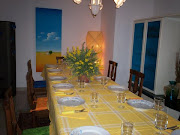

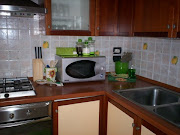

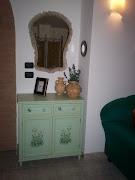


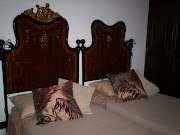
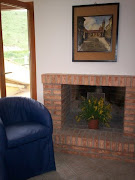

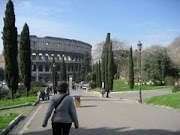






No comments:
Post a Comment